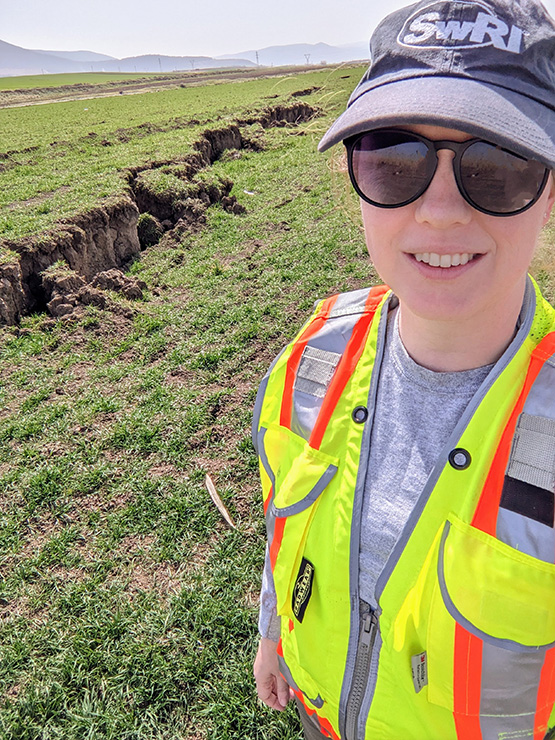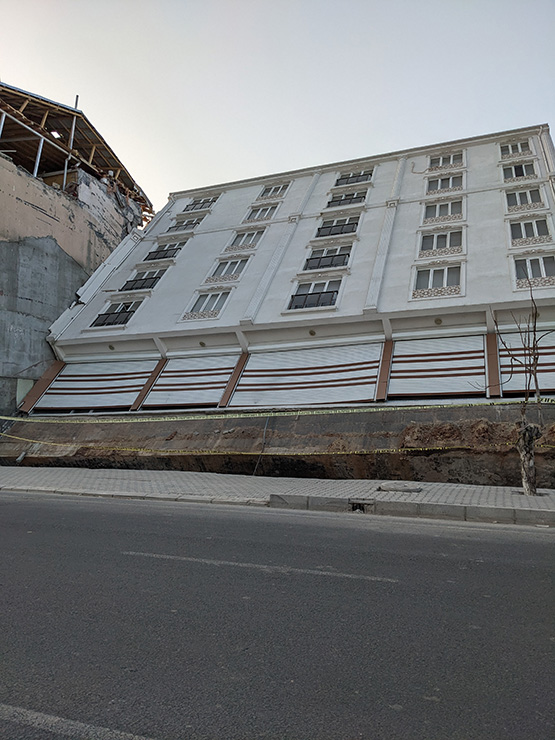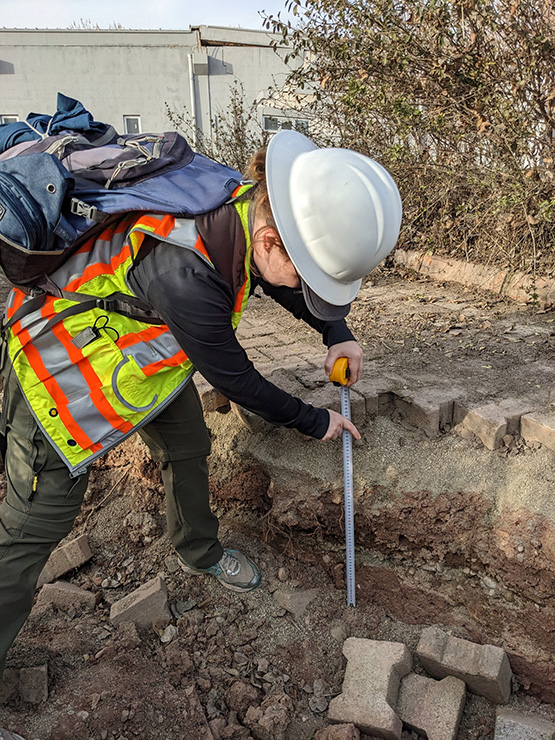Background
On February 6, 2023, a devastating M7.8 earthquake occurred in the southeastern region of Türkiye (Turkey), followed quickly by a second M7.5 event, causing widespread damage and tens of thousands of fatalities. The humanitarian, social, physical, and scientific effects of these events will likely be evident for decades to come.
The National Science Foundation (NSF)-sponsored Geotechnical Extreme Events Reconnaissance (GEER) Association partnered with the Earthquake Engineering Research Institute (EERI) and Turkish earthquake engineering societies to organize reconnaissance missions related to these earthquake events. These missions aim to collect perishable data through mapping surface faulting and soil liquefaction phenomena.
Dr. Kristin Ulmer, Senior Research Engineer in Division 1 at Southwest Research Institute (SwRI), was invited to join one of these missions. SwRI supported her participation during the reconnaissance mission and the subsequent analysis of collected data through a Staff Renewal Internal Research and Development (IR&D) project.

Figure 1: Dr. Ulmer standing near the surface trace of the fault rupture near Narlı following the February 2023 Türkiye earthquake (March 1, 2023).

Figure 2: A building that rotated due to liquefaction-induced damage to its foundation in Gӧlbaşı, Türkiye (March 1, 2023).
Approach
The objective of this project is to compile observations of earthquake-induced geotechnical damage, particularly soil liquefaction, and share these findings with other researchers and engineers to improve our understanding of earthquake-induced soil liquefaction and its effects.
While in the field during the reconnaissance mission with GEER, Dr. Ulmer observed instances of liquefaction and related damage to infrastructure across regions of Turkey within the zone of significant shaking after the February 6th earthquakes. In addition, she documented instances where such evidence was lacking to help distinguish what geotechnical conditions may lead to increased resistance against liquefaction. This documentation included photos, text descriptions, and measurements of foundation displacements and ground crack widths or depths.

Figure 3: Dr. Ulmer measuring the vertical depth of a liquefaction-induced ground crack in a walkway of a university in Gӧlbaşı, Türkiye (February 28, 2023).
Following the reconnaissance mission, Dr. Ulmer compiled her notes, photos, measurements, and other data to share her findings with other geotechnical earthquake researchers and engineers. Working with GEER team members (including those who traveled with her and those who traveled in subsequent teams), she has revisited the observations and documented several case histories that will be useful to liquefaction researchers. These studies are ongoing, and colleagues in Turkey are collecting additional geotechnical data (i.e., borehole drilling and geophysical investigations) at targeted sites in the field.
Accomplishments
The project is ongoing. To date, it has led to several published and in-preparation documents.
